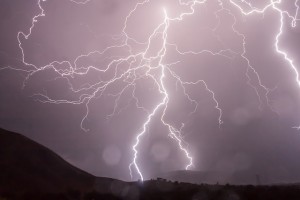Lightning safety is a necessary skill for those participating in outdoor program activities. Indeed, it is not difficult to find references on the web to lightning incidents.
The lightning risk in Scouting is real. See, “Boy Scouts Accused of Not Taking Lightning Seriously” (listing of Scout lightning incidents from 1995 to 2005); and “Lightning Strikes Boy Scouts at Philmont” (9 Scouts and 2 adults hit by lightning at Philmont).
In 2016 three of eight Outward Bound campers were injured by an indirect lightning strike while camping in the Boundary Waters. See this article.
 An article from Backpacker magazine discusses a lightning incident encountered by a Scout group in the mountains of Colorado, where “summit fever” almost resulted in serious consequences: True Tales: Struck by Lightning
An article from Backpacker magazine discusses a lightning incident encountered by a Scout group in the mountains of Colorado, where “summit fever” almost resulted in serious consequences: True Tales: Struck by Lightning
See, also, this discussion regarding 23 Scouts being injured by lightning while at camp in 2013.
BSA’s Weather Hazards training, as well as the Guide to Safe Scouting, discuss lightning safety.
NOLS (National Outdoor Leadership School) recently published a new handbook on lightning safety by John Gookin, an acknowledged expert in the field, titled NOLS Lightning . It is an excellent educational resource for Scout leaders, and includes a number of real life stories as teachable moments.
Indeed, the lack of adequate lightning hazard training was alleged in several wrongful death actions brought by parents as a result of their sons being struck by lightning. See, for instance, “Families of two hit by lightning sue Boy Scouts of America”, and “Negligence alleged in Resica Boy Scout camp death”.
Adult leaders, as well as the entire unit, should be well-versed in lightning hazards, as well as how to take those steps to safely address such hazards.
